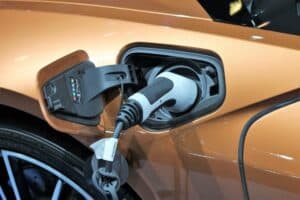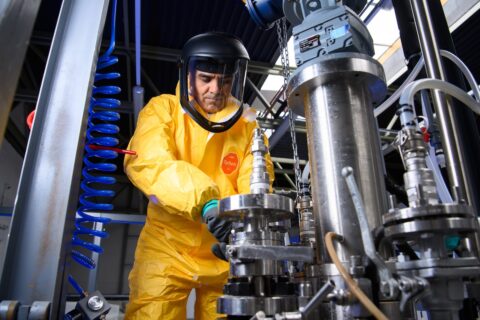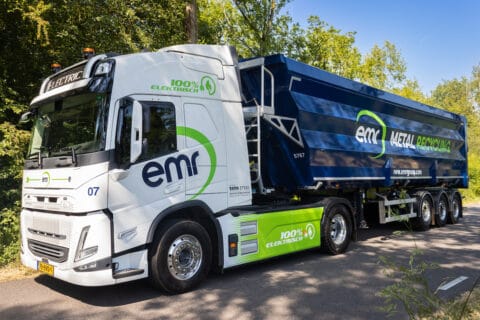Battery tech is the driving factor behind the mainstreaming of electric vehicles (EVs) worldwide, both in terms of performance and affordability. In this SustMeme Guest Post, automotive expert Giles Kirkland explores the options for innovation and asks: Are crumpled graphene balls the future for EVs?
GK: What is the most famous electric car ever made? Arguably, that title goes to the lunar rover, that made its first appearance on the surface of the Moon in 1971. Back then, almost half a century ago, it seemed that battery-powered vehicles would soon go on to replace combustion engine cars on Planet Earth as well.
The reality, however, has proved quite different, mainly due to various problems associated with the development of batteries.
The history behind battery life
The pursuit to increase battery life has been on since an Italian inventor, Alessandro Volta, created the first one back in 1800. After over a century of futile attempts, a breakthrough came with Kōnosuke Matsushita, founder of Panasonic, and his long-life (30 hours) bicycle lamp battery. Next decades saw the introduction of nickel-cadmium, alkaline, and eventually, at the closing of the 20th century, lithium polymer (Li-Po) batteries.
Nowadays, to cope with the demand for greener and better performing car batteries, scientists and engineers from companies like Tesla and small start-ups or university labs alike, work hard to develop technologies of tomorrow.
One idea that is both greener, more reliable and incredibly promising is the use of graphene balls in the anode of the battery, instead of other materials, such as graphite or silicone.
The problem with battery tech
Lithium, which is a perfect material for a battery anode, due to its high theoretical capacity and low electrochemical potential, has one downside: dendritic growth. This is a phenomenon of tree-like (hence the name dendritic) crystal structure growth, caused by solidifying molten metal.
Dendritic growth is the factor behind problems such as an unstable solid electrolyte interphase, volume fluctuation, and sometimes short-circuiting of the battery. The latter can lead to the car battery catching fire, which we have already seen with many models, including famous makes.
Using lithium with other elements, such as sulphur while dealing with some problems of Li-Po batteries, creates other limitations, due to the very nature of sulphur itself.
The potential solutions for EVs
Graphene, an allotrope of carbon, is the thinnest, strongest and lightest material known to man. It is 100-300 times stronger than steel and, what is more important in the case of electric car batteries, the best conductor of electricity.
In 2012, a Northwestern University researcher, Jiaxing Huang, discovered crumpled graphene balls. He did it by atomising a dispersion of graphene-based sheets into tiny droplets of water, which after evaporation formed into small balls.
Those graphene balls, when placed in a battery, allow for an even accommodation of the fluctuation of lithium between the cathode and the cathode. All in all, the results were amazing, as Huang managed to achieve an incredible efficiency of 97.5% over 750 battery cycles.
Another scientist, Zhiwei Wan, from the Hong Kong University of Science and Technology, has been working on a similar concept for lithium-sulphur batteries, to replace lithium-ion, because of their lower costs and higher energy density. He also experimented with crumpled graphene balls to solve the problem with polysulfides dissolution causing volumetric change during cycling as well as shuttling phenomenon. He too found that the spray-drying method proved to be a very effective mean of dealing with the problem.
The future of innovation and affordability
Going forward, the need for longer-lasting batteries is especially crucial to the automotive industry, as their current high cost and low energy density are what is slowing down the clean-and-green market transition. Solving the lithium problem with crumpled graphene balls opens the way to ultra-high capacity car batteries at a lower cost.
Technological innovation, in turn, will therefore help make electric vehicles much more affordable to the general public. As a result, more advanced and greener cars will soon find their way onto our streets, reducing the stress on the environment, as well as making our daily commute safer and better.

Giles Kirkland is an automotive industry researcher and writer for Oponeo. He focuses on the technological, scientific and sustainable aspects of the automotive. As the world evolves faster than ever, he enjoys keeping track of all current developments and sharing his knowledge and experience with other motoring and technology enthusiasts across the globe.
You can check out the full archive of past Guest Blog posts here.
Would you like to Guest Blog for SustMeme? For more info, click here.
SUSTMEME: Get the Susty Story Straight!







